Long-tailed Weasel
- March 21, 2024
- 0 comment
The Long-tailed Weasel, scientifically known as Mustela frenata, is a captivating member of the Mustelidae family, which includes ferrets, otters, and minks. Despite its small size, this sleek predator possesses remarkable hunting skills and adaptability. Sporting a slender, elongated body, typically around 13 to 18 inches in length excluding its tail, which adds an additional 6 to 8 inches, the Long-tailed Weasel is equipped with short legs and sharp claws ideal for navigating through dense vegetation and burrows in pursuit of prey. Its fur exhibits a striking color variation depending on the season and geographic location, ranging from a thick, white coat in winter for camouflage in the snow to a reddish-brown hue with a cream-colored underbelly in summer.

Found throughout North and Central America in various ecosystems such as forests, grasslands, and wetlands, this adaptable creature thrives in both rural and urban environments. Renowned for its agility and speed, the Long-tailed Weasel primarily preys on small mammals like mice, voles, and rabbits, but it also consumes birds, eggs, insects, and fish when available. Breeding in the spring, females give birth to litters of four to eight kits after a gestation period of around 10 months. Conservation efforts are underway to protect the habitats of Long-tailed Weasels and ensure their continued survival in the wild.
Long-tailed Weasel Characteristics
| Specificatio | Description |
|---|---|
| Scientific Name | Mustela frenata |
| Family | Mustelidae |
| Size (body length) | 13 to 18 inches |
| Size (including tail) | 19 to 26 inches |
| Weight | 3.5 to 8.5 ounces |
| Fur Color | Seasonal variation: White (winter), reddish-brown (summer) |
| Habitat | Forests, grasslands, wetlands, urban areas |
| Distribution | North and Central America |
| Diet | Small mammals, birds, eggs, insects, fish |
| Lifespan | 2 to 3 years in the wild |
| Reproduction | Spring breeding, litters of 4 to 8 kits |
| Conservation Status | Not threatened or endangered |
| Predators | Larger carnivores, birds of prey |
| Notable Adaptations | Agile body, sharp claws, excellent climbers |
| Economic Significance | Rodent population control |
Long-tailed Weasel: Masters of Stealth in the Animal Kingdom
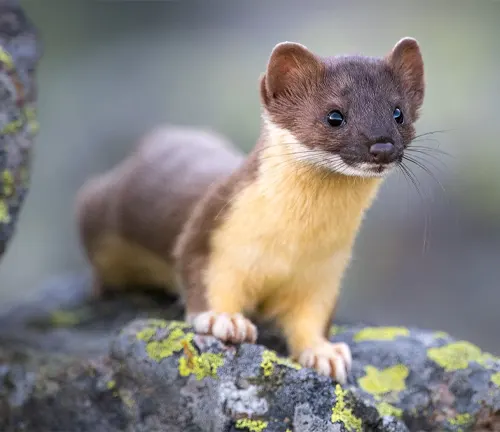
Long-tailed weasels, scientifically known as Mustela frenata, are fascinating creatures that belong to the Mustelidae family, which also includes ferrets, otters, and minks. Despite their diminutive size, these sleek predators are known for their remarkable hunting skills and adaptability to various environments. In this article, we’ll delve into the world of long-tailed weasels, exploring their physical characteristics, behavior, habitat, and interactions with humans.
Physical Characteristics
Body Size and Shape
One of the most striking features of the Long-tailed Weasel is its sleek and slender body. Measuring between 13 to 18 inches in length, excluding its impressively long tail which can reach up to 6 inches, this weasel possesses a streamlined physique perfectly suited for its predatory lifestyle. Unlike some of its bulkier relatives, such as the short-tailed weasel, the Long-tailed Weasel’s elongated body allows it to navigate through narrow burrows and dense vegetation with remarkable agility.

The Long-tailed Weasel’s head is small and triangular, housing a set of sharp teeth and keen senses essential for hunting. Its legs are relatively short but muscular, enabling swift movements and precise strikes when pursuing prey. Despite its diminutive size compared to other carnivores, this weasel is a formidable predator, capable of taking down prey much larger than itself through its cunning hunting techniques and lightning-fast reflexes.
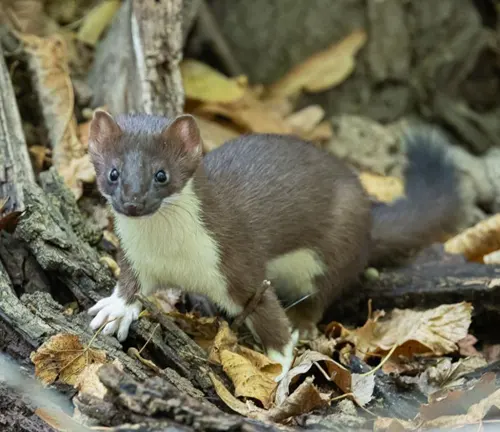
Fur Coloration
The Long-tailed Weasel’s fur coloration varies depending on its geographic location and the time of year. In its summer coat, this weasel typically sports a rich brown hue on its back, blending seamlessly with the earthy tones of its woodland habitat. Its underbelly, meanwhile, is characterized by a creamy white coloration, providing effective camouflage against the bright backdrop of snow during the winter months.
One of the most distinctive features of the Long-tailed Weasel’s fur is the presence of a black-tipped tail, which contrasts sharply with the rest of its body. This feature serves multiple purposes, including communication with conspecifics and potential predators. When threatened or agitated, the weasel may erect the long hairs on its tail, creating an imposing display to ward off adversaries.
Habitat and Distribution
Habitat
Long-tailed Weasels exhibit remarkable adaptability to various habitats, ranging from dense forests and grasslands to agricultural areas and even suburban neighborhoods. Despite their preference for cover provided by vegetation, these weasels are also found in open habitats such as meadows and marshes, where they can pursue their prey with agility and stealth.
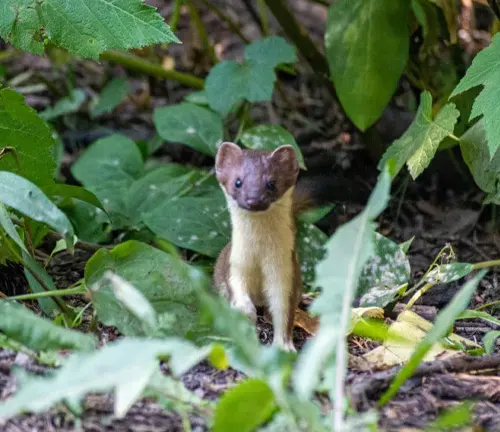
Within their chosen habitats, Long-tailed Weasels utilize a range of shelters for resting and denning, including burrows dug by other animals, hollow logs, rock crevices, and even abandoned buildings. These adaptable creatures are known to modify their dens to suit their needs, adding bedding materials and scent-marking their territories to deter potential intruders.

Distribution
The Long-tailed Weasel boasts a broad distribution across North and Central America, encompassing a wide range of ecosystems and geographical regions. In North America, their range extends from southern Canada down to northern Mexico, encompassing a diverse array of habitats along the way. In Central America, Long-tailed Weasels are found in countries such as Guatemala, Honduras, and Nicaragua, where they inhabit a variety of environments from mountainous regions to lowland forests.
While Long-tailed Weasels are widely distributed across their range, their populations may fluctuate in response to factors such as prey availability, habitat quality, and human disturbance. In some areas, they may face challenges from habitat loss due to agricultural expansion, urbanization, and other human activities. Conservation efforts aimed at preserving their habitats and mitigating human-wildlife conflicts are essential for ensuring the continued survival of these charismatic predators.
Behavior and Diet
Hunting Habits
Long-tailed Weasels are voracious carnivores known for their relentless pursuit of prey. Equipped with sharp claws, keen senses, and lightning-fast reflexes, these hunters excel at capturing a wide range of small mammals, birds, insects, and reptiles. Their slender bodies and elongated shape allow them to pursue prey into narrow burrows and crevices, giving them a distinct advantage over their quarry.

One of the Long-tailed Weasel’s signature hunting techniques is known as “stooping,” where it launches itself into the air to pounce on unsuspecting prey from above. This aerial assault, combined with their remarkable speed and agility, makes them formidable predators capable of taking down prey much larger than themselves. Their diet typically consists of rodents such as mice, voles, and rabbits, but they are opportunistic feeders and will readily consume whatever prey is available.
Reproduction and Life Cycle
Long-tailed Weasels typically breed once a year, with mating occurring in the spring or early summer months. After a gestation period of around 35 days, females give birth to litters of 4 to 8 kits, though larger litters have been recorded in areas with abundant food resources. The kits are born blind, deaf, and helpless, relying entirely on their mother for nourishment and protection.
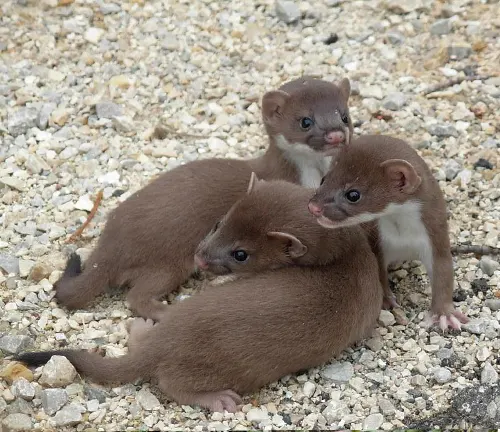
As the kits grow, the mother gradually introduces them to solid food, teaching them essential hunting skills through play and imitation. By the age of 8 to 12 weeks, the young weasels are fully weaned and begin to venture out of the den under their mother’s watchful eye. Over the following months, they undergo rapid growth and development, honing their hunting abilities and preparing for independence.
By the age of 3 to 4 months, young Long-tailed Weasels reach sexual maturity and may disperse to establish their own territories. While some individuals may remain in close proximity to their birthplace, others may travel considerable distances in search of suitable habitat and mates. The life cycle of the Long-tailed Weasel is a testament to the resilience and adaptability of these remarkable creatures, ensuring the continuation of their species for generations to come.
Adaptations for Survival
Agile and Nimble Bodies
Long-tailed Weasels possess sleek and slender bodies perfectly designed for navigating through the intricate landscapes of their habitats. Their elongated shape, coupled with short legs and a long, slender tail, allows them to slip effortlessly through narrow burrows, dense vegetation, and tight spaces in pursuit of prey. This streamlined physique grants them unparalleled agility and maneuverability, enabling them to outmaneuver larger adversaries and swiftly navigate their surroundings with grace and precision.

Furthermore, the Long-tailed Weasel’s musculature is finely tuned for swift and decisive movements, essential for capturing agile prey such as rodents and birds. Their powerful hind legs provide the propulsion needed for quick bursts of speed, while their sharp claws and teeth ensure a firm grip on their quarry. Combined with their keen senses of sight, smell, and hearing, Long-tailed Weasels are formidable hunters capable of ambushing prey with remarkable efficiency.

Camouflage and Stealth
Another key aspect of the Long-tailed Weasel’s hunting strategy is its mastery of camouflage and stealth. Their fur coloration, which varies seasonally from brown in the summer to white in the winter, provides effective concealment against the backdrop of their surroundings. In woodland habitats, their brown fur blends seamlessly with the earthy tones of fallen leaves and tree bark, while their white winter coat allows them to vanish amidst the snowy landscape.
In addition to their natural camouflage, Long-tailed Weasels employ stealthy tactics to approach their prey undetected. They move with deliberate and calculated movements, minimizing noise and avoiding sudden movements that could alert potential prey. Their slender bodies allow them to slip through the undergrowth with minimal disturbance, while their sharp senses enable them to detect the slightest rustle or scent of their quarry.
Interactions with Humans
Economic Significance
Long-tailed Weasels contribute to the economy and well-being of ecosystems in several ways. As efficient predators of rodents, they help regulate populations of pests that can damage crops and carry diseases harmful to humans and livestock. By preying on species such as mice, voles, and rats, Long-tailed Weasels indirectly benefit agricultural productivity and reduce the need for costly pest control measures.
Furthermore, Long-tailed Weasels are valued members of ecosystems, playing vital roles in food webs and contributing to overall biodiversity. As apex predators, they help maintain balance within their habitats by controlling populations of prey species and influencing the distribution and behavior of other animals. Their presence serves as an indicator of ecosystem health and functioning, making them important subjects for ecological research and conservation efforts.
Conservation Status
Despite their ecological importance, Long-tailed Weasels face various threats to their survival, primarily driven by human activities. Habitat loss and fragmentation due to urbanization, agriculture, and industrial development pose significant challenges to these adaptable predators, limiting their access to suitable habitats and prey resources. Fragmentation of habitat can also increase their vulnerability to predation, competition, and genetic isolation, further jeopardizing their populations.
Additionally, Long-tailed Weasels may face direct persecution from humans, either through trapping and hunting for fur or as perceived pests in agricultural areas. While they are not typically targeted for their pelts on a large scale, localized trapping and hunting can have detrimental effects on their populations, especially in areas where they are already under pressure from habitat loss and other threats.
Threats and Predators
Natural Predators
While Long-tailed Weasels are skilled hunters themselves, they are not immune to predation by larger carnivores. Among their natural predators are birds of prey such as owls, hawks, and eagles, which target weasels as potential prey. Additionally, larger mammals such as foxes, coyotes, and bobcats may pose a threat to Long-tailed Weasels, particularly juveniles or individuals weakened by injury or illness. Despite their agility and defensive capabilities, Long-tailed Weasels must remain vigilant to evade detection and avoid becoming prey themselves.
Human-induced Threats
Human activities also pose significant threats to the Long-tailed Weasel’s survival. Habitat loss and fragmentation resulting from urbanization, agriculture, and deforestation diminish available habitat and fragment populations, making individuals more vulnerable to predation and genetic isolation. Furthermore, vehicular collisions on roads and highways can result in fatalities among Long-tailed Weasels attempting to traverse fragmented landscapes.
Another human-induced threat to Long-tailed Weasels is the use of pesticides and rodenticides, which can indirectly harm these predators by poisoning their prey or contaminating their habitats. Long-tailed Weasels that consume poisoned rodents may suffer secondary poisoning, leading to illness or death. Additionally, the loss of prey populations due to pesticide use can reduce food availability for Long-tailed Weasels, further exacerbating their vulnerability.
Conservation Challenges
Addressing these threats and ensuring the long-term survival of Long-tailed Weasels presents significant conservation challenges. Efforts to conserve and restore habitat, minimize habitat fragmentation, and mitigate human-wildlife conflicts are essential for maintaining viable populations of Long-tailed Weasels across their range. Education and outreach initiatives aimed at raising awareness about the ecological importance of Long-tailed Weasels and promoting coexistence with wildlife can also help reduce human-induced threats to these predators.
Conservation Efforts
Habitat Protection and Restoration
One of the primary focuses of Long-tailed Weasel conservation efforts is the protection and restoration of its habitat. Conservation organizations work to identify key habitats crucial for the survival of Long-tailed Weasels and advocate for their preservation through land acquisition, habitat management, and establishment of protected areas. Additionally, habitat restoration projects aim to enhance degraded habitats and reconnect fragmented landscapes to facilitate movement and gene flow among Long-tailed Weasel populations.
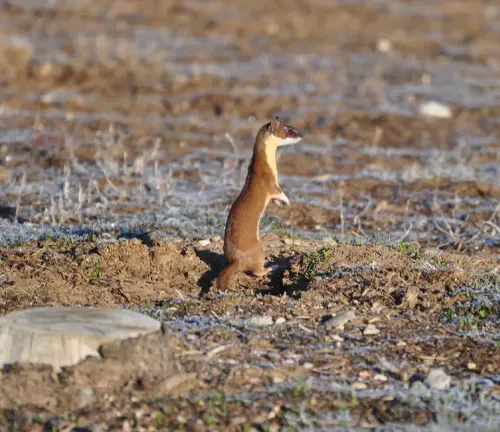
Mitigation of Human-Wildlife Conflicts
Addressing conflicts between humans and Long-tailed Weasels is essential for their conservation. Conservationists collaborate with local communities and stakeholders to implement measures to minimize human-wildlife conflicts, such as installing predator-proof fencing around agricultural areas, implementing non-lethal deterrents to prevent depredation on livestock, and promoting coexistence with wildlife through education and outreach initiatives.
Research and Monitoring
Scientific research plays a crucial role in informing conservation efforts for Long-tailed Weasels. Researchers conduct population surveys, habitat assessments, and genetic studies to better understand the distribution, abundance, and ecology of Long-tailed Weasel populations. Monitoring programs track population trends and assess the effectiveness of conservation interventions, providing valuable data to guide management decisions and prioritize conservation actions.
Legislation and Policy
Legislation and policy measures are instrumental in protecting Long-tailed Weasels and their habitats. Governments enact laws and regulations to regulate habitat destruction, control the use of pesticides and rodenticides, and designate protected areas for wildlife conservation. Additionally, international agreements and conventions, such as the Convention on Biological Diversity, provide frameworks for cooperative action to conserve biodiversity and protect species like the Long-tailed Weasel.
Community Engagement and Education
Engaging local communities and raising awareness about the importance of Long-tailed Weasels and their role in ecosystems are essential components of conservation efforts. Conservation organizations collaborate with communities to develop sustainable livelihoods that support conservation objectives, provide training and resources for wildlife-friendly farming practices, and conduct outreach activities to foster appreciation and understanding of Long-tailed Weasels among the public.
Different Species
Least Weasel
(Mustela nivalis)
Found in various habitats across North America, Europe, and Asia, the Least Weasel is the smallest member of the weasel family. It shares the slender body and agile hunting skills characteristic of the Long-tailed Weasel.
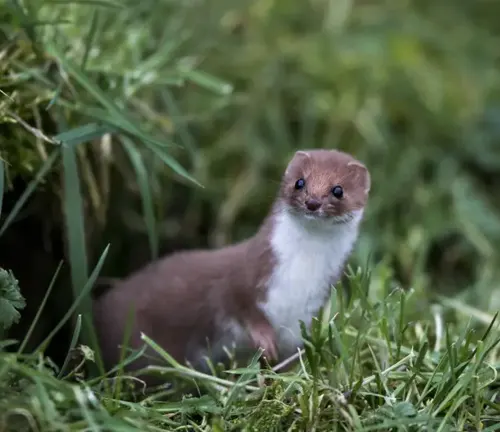

European Weasel
(Mustela nivalis vulgaris)
This subspecies of the Least Weasel is found throughout Europe and parts of Asia. Like its close relative, it preys primarily on small mammals and is known for its ferocious hunting abilities.
Mountain Weasel
(Mustela altaica)
Native to mountainous regions of Central Asia, the Mountain Weasel is larger than the Least Weasel but still shares many similarities in behavior and appearance. It is well-adapted to its alpine habitat and feeds on a variety of prey including rodents and birds.

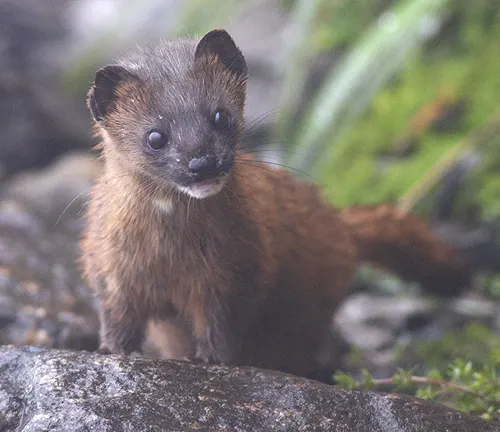
Siberian Weasel
(Mustela sibirica)
Found in Siberia and parts of Central Asia, the Siberian Weasel is closely related to the Long-tailed Weasel. It inhabits a range of environments including forests, steppes, and tundra, and is known for its swift movements and voracious appetite.
Japanese Weasel
(Mustela itatsi)
Endemic to Japan, the Japanese Weasel is similar in size and appearance to the Long-tailed Weasel. It is found in various habitats across the Japanese archipelago and plays a vital role in controlling rodent populations.

Frequently Asked Questions (FAQs)
- Where do long-tailed weasels live?
Long-tailed weasels are found throughout North and Central America, inhabiting a variety of habitats including forests, grasslands, wetlands, and urban areas. - Do long-tailed weasels hibernate?
Long-tailed weasels do not hibernate. They are active year-round and are particularly active during the winter months when they hunt for food to sustain themselves in colder climates. - How do long-tailed weasels hunt?
Long-tailed weasels are skilled hunters that use their agility, speed, and sharp claws to capture prey. They often pursue prey into burrows or dense vegetation and rely on their keen sense of smell and hearing to locate potential targets. - Are long-tailed weasels solitary animals?
Long-tailed weasels are mostly solitary animals, except during the breeding season when males and females come together to mate. Outside of the breeding season, they tend to be territorial and avoid interactions with other individuals of their species. - Do long-tailed weasels have predators?
Yes, long-tailed weasels have predators including larger carnivores such as foxes, coyotes, and birds of prey. They are also vulnerable to predation by domestic pets such as cats and dogs. - How do long-tailed weasels communicate?
Long-tailed weasels communicate using a variety of vocalizations, including chirps, squeaks, and hisses. They also use scent marking to define their territories and communicate with other individuals. - Do long-tailed weasels have any predators?
Long-tailed weasels are small predators themselves, but they may fall prey to larger carnivores such as foxes, coyotes, and birds of prey. They use their agility and speed to evade predators, but they are still vulnerable, especially when caring for their young. - Are long-tailed weasels nocturnal?
Long-tailed weasels are primarily crepuscular, meaning they are most active during the dawn and dusk hours. However, they may also be active during the day or night, depending on factors such as food availability and environmental conditions. - Do long-tailed weasels have any unique adaptations?
Yes, long-tailed weasels have several unique adaptations that make them successful predators. These include their slender bodies, sharp claws, and excellent climbing and swimming abilities. - Are long-tailed weasels protected by law?
Long-tailed weasels may be protected by wildlife conservation laws in certain regions, depending on their conservation status and local regulations. It is important to check with local authorities regarding their legal status and protection status in specific areas.


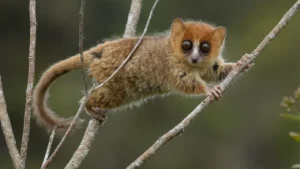
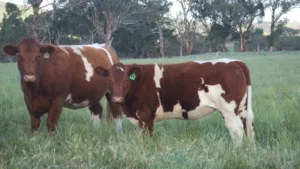



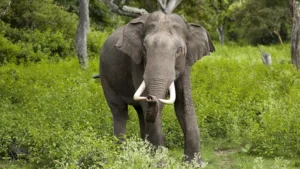




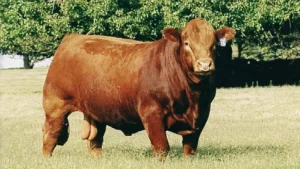

Leave your comment